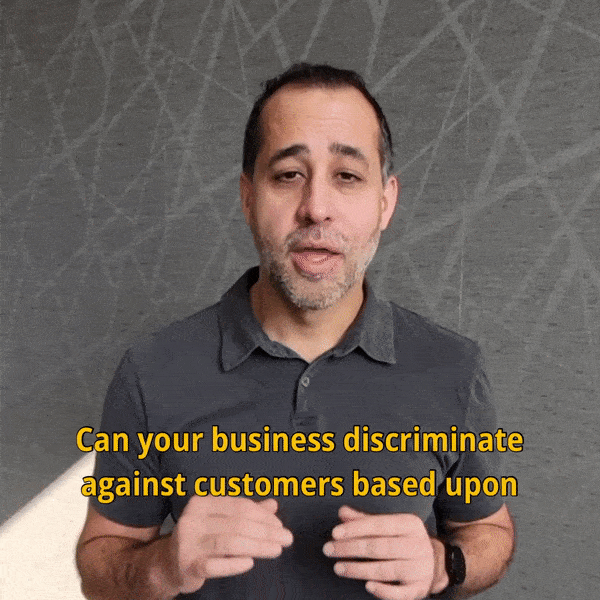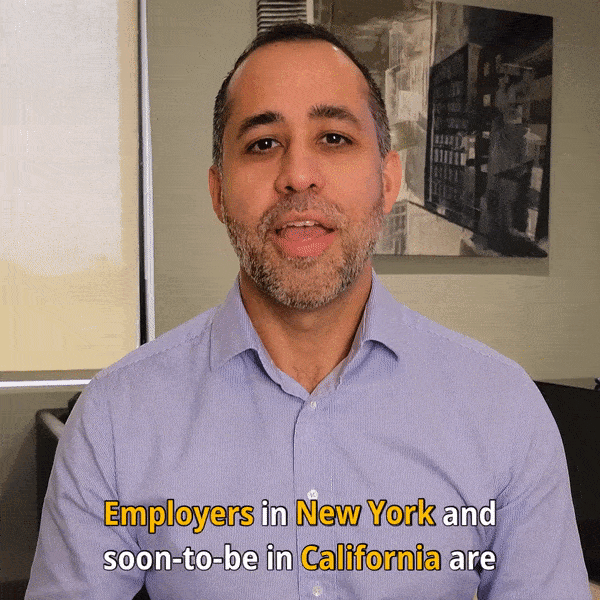Diversity in the workplace, a totally laudable goal, is actually harder to achieve than many employers appreciate, and ill-conceived or badly executed efforts can actually make things worse, opening the door to legal liability. To get fuller picture of the issue, it may be worth thinking about the topic in three different ways:
- what the law requires to prevent discrimination in employment;
- the business and social goal of diversity, and
- inclusion as a way to achieve legal compliance and maximize business benefits.
Finally, there are simply some perilous situations that employers should avoid and some techniques to minimize perils.
Prohibited employment discrimination
A variety of federal and state laws are designed to prevent discrimination in employment on the basis of certain factors. Among the important federal laws are:
- Title VII of the Civil Rights Act of 1964 that prohibits employment discrimination based on race, color, religion, sex and national origin;
- The Pregnancy Discrimination Act, which amends Title VII to specify that the prohibited discrimination on the basis of sex includes discrimination on the basis of pregnancy, childbirth, or related medical conditions;
- The Americans with Disabilities Act that prohibits employment discrimination on the basis of disability and requires employers to make reasonable accommodation for disabled employees and applicants;
- The ADA Amendments Act of 2008, which clarified the definition of disability under the ADA in response to the Supreme Court decision in Toyota Motor Manufacturing, Kentucky, Inc. v. Williams;
- The Age Discrimination in Employment Act, which prohibits employment discrimination against persons 40 years of age or older;
- The Equal Pay Act that prohibits sex-based wage discrimination between men and women in the same establishment who perform jobs that require substantially equal skill, effort and responsibility under similar working conditions;
- The Genetic Information Nondiscrimination Act , which prohibits the use of genetic information in making employment decisions; and
- The Uniformed Services Employment and Reemployment Rights Act that protects the civilian employment rights of veterans.
State and local laws may provide greater protections to employees and job applicants than federal law. For example, although Title VII does not prohibit discrimination on the basis of sexual orientation, California’s Fair Employment and Housing Act does.
All these laws share two things, however. The first is the idea of a protected class. The laws do not protect all employees, but those who the legislature believes have typically been the victims of discrimination in the past. The ADEA does not prohibit discrimination on the basis of age to those under forty, for example.
The second thing they share is a focus on intention and process. They prohibit certain acts – recruiting, hiring, promoting or failing to promote, disciplining and firing – for reasons based solely on the identity of the individual employee. An employer may, for instance, fire a female worker (a member of a protected class), just not solely because she is a woman.
That an employer intends to take certain employment actions for prohibited reasons is sometimes obvious, as when an advertisement seeks to recruit Indian wait staff for an Indian restaurant. Title VII prohibits employment discrimination on the basis of national origin. This is often described as disparate treatment discrimination, and it is fairly rare.
More difficult situations arise from what is termed “disparate impact” discrimination when a rule or guideline that is neutral on its face, for example a requirement that candidates for employment be at least six feet tall, are likely to have a greater impact on certain protected groups.
In situations such as these, the prohibited reason for the action can be very difficult to prove and the plaintiff’s argument tends to focus on whether the contested requirement is a bona fide occupational requirement or “BFOQ” and to take on a statistical character.
Bona fide occupational requirement
In everyday parlance, these are the minimum necessary skills and abilities to do a job, and employers do well to define them as narrowly as possible, with a focus on skills and abilities, rather than identity. It’s the difference between requiring that someone be at least six feet tall and requiring that they be able to dunk a basketball, if basketball skills are a requirement of the job.
Much recent employment litigation has focused on whether the basic job requirements are sufficiently thoughtfully drafted.
The statistical approach
Disparate impact cases tend to rely heavily on statistics that suggest that an employment practice has a discriminatory effect. If, for example, an employer ostensibly recruits from a community that is roughly half men and half women, 35 percent Black and 40 percent Spanish-speaking, but all employees are white men who speak only English, an inference might be drawn that recruiting and hiring practices violate Title VII. An odd result suggests a flawed process.
While statistics generally cannot be used to establish a prima facie case of disparate treatment discrimination, they may be cited to establish that the employer’s justification for the adverse action taken against the employee is a mere pretext for discrimination.
Nondiscrimination law does not require a diverse workforce, but employers’ fears of bad overall statistics in a disparate impact claim may be one of the motivating factors for the movement toward diversity.
Employers should remain alert to any otherwise unexplainable skewing of workplace demographics and should review recruiting and hiring practices to ensure that that those efforts are reaching the largest possible pool of qualified applicants.
Other reasons are more positive and more focused on the business benefits of a diverse workforce.
Benefits and challenges of a diverse workplace
Diversity in the workplace is a step past nondiscrimination. The concept is typically defined to include characteristics beyond those protected by federal and state laws. They may include other influences on an individual’s point of view, such as education, parental status, profession, and cultural identity.
The business argument for diversity is that it may allow for better problem solving and decision making, more innovation and creativity and more success in marketing and product development. Being able to recognize and accept diverse workers allows them to feel included and can motivate them to work harder in their environment, according to this theory.
But deliberate attempts to create a more diverse workplace can come with unintended consequences.
- Language or cultural barriers as well as different perspectives can sometimes lead to ineffective communication which can result in a lack of team work as well as confusion and low workplace morale.
- Some employees may balk at accepting cultural and social diversity in the workplace and may be unwilling to go along with the changes, which can inhibit creativity and progress.
- Some employees from majority backgrounds may feel that their work and talents are less valued and less rewarded than those of the “diverse” cohort, and may lash out in reverse discrimination lawsuits.
- There is on one-size fits all diversity approach and any initiative must be customized to a particular environment in order to succeed.
Red flags
Two employment practices in particular – one likely an attempt to create diversity through quotas and the other an attempt to cultivate a certain branded ”look” especially at retail clothing stores have been the source of employment law litigation and should be used only with great caution.
The cases dealing with discrimination in college admissions have proceeded along a slightly different path than cases dealing with employment discrimination, but the issues of quotas, whether broadly or narrowly defined has jumped the barrier. Although employers may commit to having a diverse workforce, they should probably not commit to percentages or numbers.
Can employers hire for appearance? Employers have long had guidelines for employee appearance, usually in terms of grooming, dress codes or uniforms. They are also generally free to hire and promote attractive employees.
But some characteristics often considered unattractive, like obesity or evidence of a disability, may be protected. And policies of hiring preppy-looking young men and women or tall willowy blondes as “brand ambassadors” in retail clothing stores have been particularly in the spotlight, lately. Membership in a group protected by non-discrimination laws is often indicated by visible cues such as skin color or religious head covering. Employers venturing beyond clothing and grooming standards may be doing so at their own peril.
What to do instead
At the minimum, of course, employers are required to comply with the requirements of state and federal anti-discrimination laws. The three greatest tools are a written manual of policies and procedures, training in the requirements of law for all those with managerial responsibilities and carefully crafted job descriptions.
There are compelling arguments both legal and business for taking the next step toward building a diverse workforce and, as above, a written policy that embraces that goal, managerial training, and a robust policy to discourage and punish harassment are key.
Beyond that, however, workplace policies of inclusion that may help to ward off resistance to diversity can be helpful. These will vary with the workplace but may include:
- Involving every employee possible in formulating and executing diversity initiatives in the workplace;
- Fostering an atmosphere of open communication;
- Promoting diversity in leadership positions;
- Communicating clearly about opportunities for advancement and setting up mentoring programs;
- Forming affinity groups that will empower small groups of employees, both recent and more seasoned hires to brainstorm about improving products moving into new markets. Employers can get new ideas and employees will be reassured that their differences are assets.
A well-managed diversity initiative may empower employees and bring new insights and talents into the workplace. But creating this atmosphere and warding off resistance from employees who may feel undervalued or displaced takes careful planning and execution.


![Unraveling the Workforce: Navigating the Aftermath of Mass Layoffs [e322]](https://www.pashalaw.com/wp-content/uploads/2023/07/Untitled-design-23-1024x723.png)
![Return to the Office vs. Remote: What Can Employers Legally Enforce? [e321]](https://www.pashalaw.com/wp-content/uploads/2023/01/Pasha_LSSB_321_banner-1024x723.jpg)



![California v. Texas: Which is Better for Business? [313]](https://www.pashalaw.com/wp-content/uploads/2021/07/Pasha_LSSB_CaliforniaVSTexas-1024x723.jpg)





![Employers vs. Employees: When Are Employment Restrictions Fair? [e318]](https://www.pashalaw.com/wp-content/uploads/2022/05/Pasha_LSSB_EmployeesVsEmployers_banner-1-1024x723.jpg)




![Law in the Digital Age: Exploring the Legal Intricacies of Artificial Intelligence [e323]](https://www.pashalaw.com/wp-content/uploads/2023/11/WhatsApp-Image-2023-11-21-at-13.24.49_4a326c9e-300x212.jpg)
![Unraveling the Workforce: Navigating the Aftermath of Mass Layoffs [e322]](https://www.pashalaw.com/wp-content/uploads/2023/07/Untitled-design-23-300x212.png)
![Return to the Office vs. Remote: What Can Employers Legally Enforce? [e321]](https://www.pashalaw.com/wp-content/uploads/2023/01/Pasha_LSSB_321_banner-300x212.jpg)
![Explaining the Hans Niemann Chess Lawsuit v. Magnus Carlsen [e320]](https://www.pashalaw.com/wp-content/uploads/2022/10/LAWYER-EXPLAINS-7-300x169.png)
![California v. Texas: Which is Better for Business? [313]](https://www.pashalaw.com/wp-content/uploads/2021/07/Pasha_LSSB_CaliforniaVSTexas-300x212.jpg)
![Buyers vs. Sellers: Negotiating Mergers & Acquisitions [e319]](https://www.pashalaw.com/wp-content/uploads/2022/06/Pasha_LSSB_BuyersVsSellers_banner-300x212.jpg)
![Employers vs. Employees: When Are Employment Restrictions Fair? [e318]](https://www.pashalaw.com/wp-content/uploads/2022/05/Pasha_LSSB_EmployeesVsEmployers_banner-1-300x212.jpg)
![Vaccine Mandates Supreme Court Rulings [E317]](https://www.pashalaw.com/wp-content/uploads/2022/02/WhatsApp-Image-2022-02-11-at-4.10.32-PM-300x212.jpeg)
![Business of Healthcare [e316]](https://www.pashalaw.com/wp-content/uploads/2021/11/Pasha_LSSB_BusinessofHealthcare_banner-300x212.jpg)
![Social Media and the Law [e315]](https://www.pashalaw.com/wp-content/uploads/2021/10/WhatsApp-Image-2021-10-06-at-1.43.08-PM-300x212.jpeg)
![Defining NDA Boundaries: When does it go too far? [e314]](https://www.pashalaw.com/wp-content/uploads/2021/09/Pasha_LSSB_NDA_WordPress-2-300x212.jpg)
![More Than a Mistake: Business Blunders to Avoid [312] Top Five Business Blunders](https://www.pashalaw.com/wp-content/uploads/2021/06/Pasha_LSSB_Blunders_WP-1-300x212.jpg)
![Is There a Right Way to Fire an Employee? We Ask the Experts [311]](https://www.pashalaw.com/wp-content/uploads/2021/02/Pasha_LSSB_FireAnEmployee_Website-300x200.jpg)
![The New Frontier: Navigating Business Law During a Pandemic [310]](https://www.pashalaw.com/wp-content/uploads/2020/12/Pasha_LSSB_Epidsode308_Covid_Web-1-300x200.jpg)
![Wrap Up | Behind the Buy [8/8] [309]](https://www.pashalaw.com/wp-content/uploads/2020/11/Pasha_BehindTheBuy_Episode8-300x200.jpg)
![Is it all over? | Behind the Buy [7/8] [308]](https://www.pashalaw.com/wp-content/uploads/2020/09/iStock-1153248856-overlay-scaled-300x200.jpg)
![Fight for Your [Trademark] Rights | Behind the Buy [6/8] [307]](https://www.pashalaw.com/wp-content/uploads/2020/07/Fight-for-your-trademark-right-300x200.jpg)
![They Let It Slip | Behind the Buy [5/8] [306]](https://www.pashalaw.com/wp-content/uploads/2020/06/Behind-the-buy-they-let-it-slip-300x200.jpg)
![Mo’ Investigation Mo’ Problems | Behind the Buy [4/8] [305]](https://www.pashalaw.com/wp-content/uploads/2020/05/interrobang-1-scaled-300x200.jpg)
![Broker or Joker | Behind the Buy [3/8] [304] Behind the buy - Broker or Joker](https://www.pashalaw.com/wp-content/uploads/2020/04/Joker-or-Broker-1-300x185.jpg)
![Intentions Are Nothing Without a Signature | Behind the Buy [2/8] [303]](https://www.pashalaw.com/wp-content/uploads/2020/04/intentions-are-nothing-without-a-signature-300x185.jpg)
![From First Steps to Final Signatures | Behind the Buy [1/8] [302]](https://www.pashalaw.com/wp-content/uploads/2020/04/first-steps-to-final-signatures-300x185.jpg)
![The Dark-side of GrubHub’s (and others’) Relationship with Restaurants [e301]](https://www.pashalaw.com/wp-content/uploads/2015/04/When-Competition-Goes-Too-Far-Ice-Cream-Truck-Edition-300x201.jpg)
![Ultimate Legal Breakdown of Internet Law & the Subscription Business Model [e300]](https://www.pashalaw.com/wp-content/uploads/2019/05/Ultimate-Legal-Breakdown-of-Internet-Law-the-Subscription-Business-Model-300x196.jpg)
![Why the Business Buying Process is Like a Wedding?: A Legal Guide [e299]](https://www.pashalaw.com/wp-content/uploads/2019/03/futura-300x169.jpg)
![Will Crowdfunding and General Solicitation Change How Companies Raise Capital? [e298]](https://www.pashalaw.com/wp-content/uploads/2018/11/Will-Crowdfunding-and-General-Solicitation-Change-How-Companies-Raise-Capital-300x159.jpg)
![Pirates, Pilots, and Passwords: Flight Sim Labs Navigates Legal Issues (w/ Marc Hoag as Guest) [e297]](https://www.pashalaw.com/wp-content/uploads/2018/07/flight-sim-labs-300x159.jpg)
![Facebook, Zuckerberg, and the Data Privacy Dilemma [e296] User data, data breach photo by Pete Souza)](https://www.pashalaw.com/wp-content/uploads/2018/04/data-300x159.jpg)
![What To Do When Your Business Is Raided By ICE [e295] I.C.E Raids business](https://www.pashalaw.com/wp-content/uploads/2018/02/ice-cover-300x159.jpg)
![General Contractors & Subcontractors in California – What you need to know [e294]](https://www.pashalaw.com/wp-content/uploads/2018/01/iStock-666960952-300x200.jpg)
![Mattress Giants v. Sleepoplis: The War On Getting You To Bed [e293]](https://www.pashalaw.com/wp-content/uploads/2017/12/sleepopolis-300x159.jpg)
![The Harassment Watershed [e292]](https://www.pashalaw.com/wp-content/uploads/2017/12/me-2-300x219.jpg)
![Investing and Immigrating to the United States: The EB-5 Green Card [e291]](https://www.pashalaw.com/wp-content/uploads/2012/12/eb-5-investment-visa-program-300x159.jpg)
![Responding to a Government Requests (Inquiries, Warrants, etc.) [e290] How to respond to government requests, inquiries, warrants and investigation](https://www.pashalaw.com/wp-content/uploads/2017/10/iStock_57303576_LARGE-300x200.jpg)
![Ultimate Legal Breakdown: Employee Dress Codes [e289]](https://www.pashalaw.com/wp-content/uploads/2017/08/Ultimate-Legal-Breakdown-Template-1-300x159.jpg)
![Ultimate Legal Breakdown: Negative Online Reviews [e288]](https://www.pashalaw.com/wp-content/uploads/2017/06/Ultimate-Legal-Breakdown-Online-Reviews-1-300x159.jpg)
![Ultimate Legal Breakdown: Social Media Marketing [e287]](https://www.pashalaw.com/wp-content/uploads/2017/06/ultimate-legal-breakdown-social-media-marketing-blur-300x159.jpg)
![Ultimate Legal Breakdown: Subscription Box Businesses [e286]](https://www.pashalaw.com/wp-content/uploads/2017/03/ultimate-legal-breakdown-subscription-box-services-pasha-law-2-300x159.jpg)
![Can Companies Protect Against Foreseeable Misuse of Apps [e285]](https://www.pashalaw.com/wp-content/uploads/2017/01/iStock-505291242-300x176.jpg)
![When Using Celebrity Deaths for Brand Promotion Crosses the Line [e284]](https://www.pashalaw.com/wp-content/uploads/2017/01/celbrity-300x159.png)
![Are Employers Liable When Employees Are Accused of Racism? [e283] Racist Employee](https://www.pashalaw.com/wp-content/uploads/2016/12/Are-employers-liable-when-an-employees-are-accused-of-racism-300x159.jpg)
![How Businesses Should Handle Unpaid Bills from Clients [e282] What to do when a client won't pay.](https://www.pashalaw.com/wp-content/uploads/2016/12/How-Businesses-Should-Handle-Unpaid-Bills-to-Clients-300x159.png)
![Can Employers Implement English Only Policies Without Discriminating? [e281]](https://www.pashalaw.com/wp-content/uploads/2016/11/Can-Employers-Impliment-English-Only-Policies-Without-Discriminating-300x159.jpg)
![Why You May No Longer See Actors’ Ages on Their IMDB Page [e280]](https://www.pashalaw.com/wp-content/uploads/2016/10/IMDB-AGE2-300x159.jpg)
![Airbnb’s Discrimination Problem and How Businesses Can Relate [e279]](https://www.pashalaw.com/wp-content/uploads/2016/09/airbnb-300x159.jpg)
![What To Do When Your Amazon Account Gets Suspended [e278]](https://www.pashalaw.com/wp-content/uploads/2016/09/What-To-Do-When-Your-Amazon-Account-Gets-Suspended-1-300x200.jpg)
![How Independent Artists Reacted to Fashion Mogul Zara’s Alleged Infringement [e277]](https://www.pashalaw.com/wp-content/uploads/2016/08/How-Independent-Artists-Reacted-to-Fashion-Mogul-Zaras-Alleged-Infringement--300x159.jpg)
![Can Brave’s Ad Replacing Software Defeat Newspapers and Copyright Law? [e276]](https://www.pashalaw.com/wp-content/uploads/2016/08/Can-Braves-Ad-Replacing-Software-Defeat-Newspapers-and-Copyright-Law-300x159.jpg)
![Why The Roger Ailes Sexual Harassment Lawsuit Is Far From Normal [e275]](https://www.pashalaw.com/wp-content/uploads/2016/07/WHY-THE-ROGER-AILES-SEXUAL-HARASSMENT-LAWSUIT-IS-FAR-FROM-NORMAL-300x159.jpeg)
![How Starbucks Turned Coveted Employer to Employee Complaints [e274]](https://www.pashalaw.com/wp-content/uploads/2016/07/iStock_54169990_LARGE-300x210.jpg)
